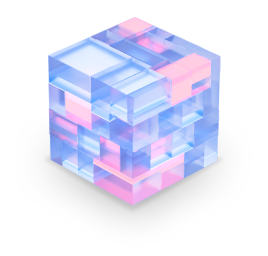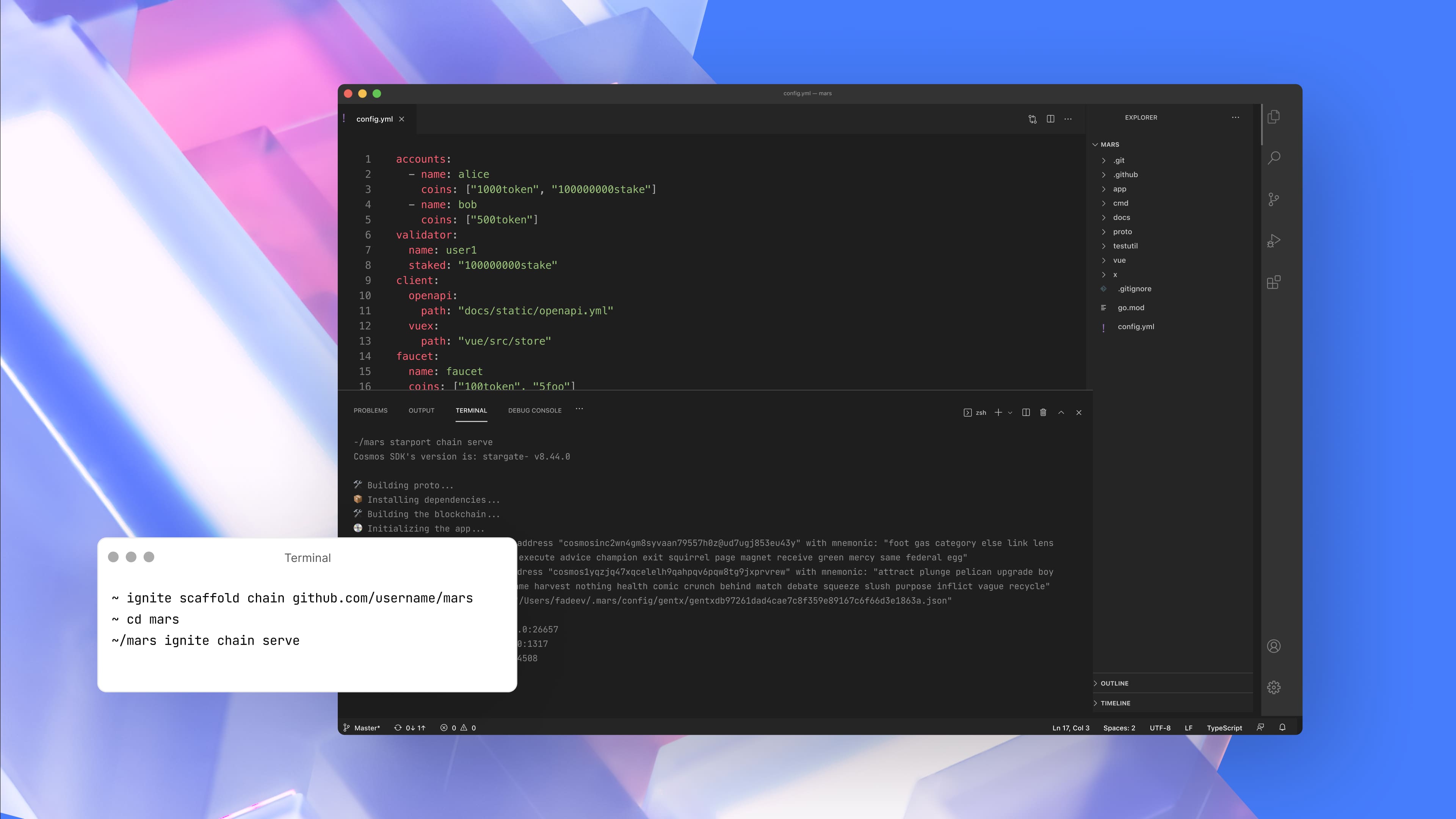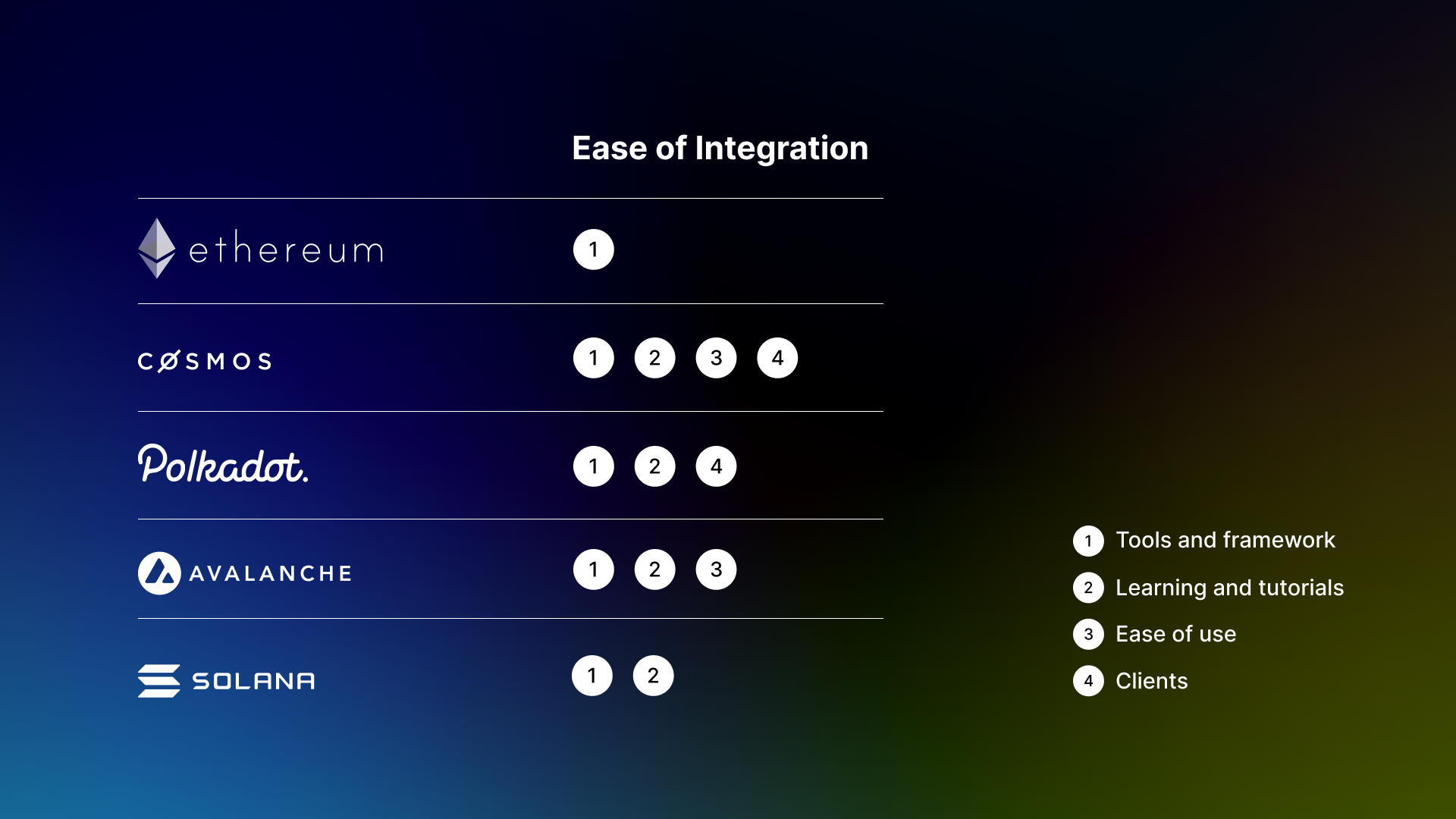
Get expert tips on blockchain development and Ignite CLI updates to give your project a head start.
curl https://get.ignite.com/cli! | bash 
 Har Preet Singh
8 min read
Har Preet Singh
8 min read

Blockchain platforms are emerging systems that allow the development of blockchain applications. Today there are many blockchain platforms available. As a developer, it’s difficult to know how to select a blockchain platform and to discern how a blockchain development platform varies from core blockchain technology. This article evaluates the top 5 blockchain platforms based on ease of integration, modularity, and extensibility to help you choose the platform that fits your requirements.
You realize by now that there are many blockchain platforms available. How do you evaluate the different set of capabilities for every blockchain platform? How can you get started to run your decentralization application or service?
After four years as a blockchain developer, I answer these essential questions in this review of blockchain features for these open source and decentralized platforms.
As a blockchain developer, the most important features are ease of integration and ecosystem community support.
To get started, here is a high-level overview of five blockchain platforms.
Ethereum is a decentralized, open source blockchain with smart contract functionality. Ethereum smart contracts run on Ethereum Virtual Machines (EVM). Ether (ETH) is the native cryptocurrency of the Ethereum platform. While Bitcoin is known as a "first-generation" blockchain, Ethereum revolutionized the crypto space by bringing in smart contracts on the blockchain and becoming the first second-generation blockchain. Ethereum was initially launched as a Proof-of-Work (PoW) consensus chain. Now, the next generation Ethereum 2.0 uses Proof-of-Stake (PoS).
Cosmos is a decentralized network of independent parallel blockchains that are powered by BFT consensus algorithms like Tendermint consensus. The Cosmos Hub is the first of thousands of interconnected blockchains in the Cosmos ecosystem. The native cryptocurrency is the ATOM token. ATOM is the Cosmos Hub primary token that secures the Hub’s valuable interchain services. Cosmos allows blockchains to transfer value with each other by using the Inter-Blockchain Communication protocol (IBC). Cosmos was the first network to introduce, develop, and use IBC to allow blockchains to talk to each other.
The Polkadot blockchain protocol can be represented as a blockchain of blockchains or a multichain. The staking token of the Polkadot network is DOT. In contrast to the Ethereum network, Polkadot is working to become a heterogeneous blockchain network. Polkadot uses GRANPA and BABE hybrid consensus protocols.
Two main structural components of the Polkadot multichain are the Relay Chain and Parachains.
Avalanche is an open, programmable smart contracts platform for decentralized applications. Avalanche consists of many subnets to form a heterogeneous interoperable network of blockchains that uses the Avalanche Consensus protocols to implement a secure, globally distributed, interoperable, and trustless framework. Avalanche uses AVAX as its native cryptocurrency.
Avalanche emphasizes these built-in blockchains: Exchange Chain (X-Chain), Platform Chain (P-Chain), and Contract Chain (C-Chain).
The Solana public blockchain platform achieves consensus using Proof-of-Stake (PoS) and Proof-of-History (PoH). The Solana native cryptocurrency is SOL.
According to Solana, the relation with consensus mechanism is that "Proof of History is not a consensus mechanism, but it is used to improve the performance of Solana's Proof of Stake consensus. It is also used to improve the performance of the data plane protocols.”
Now that you know about the most popular blockchain platforms, the first question you start with is How Do I Select a Blockchain Platform? As a blockchain developer myself, I understand that the more aptly phrased question is How Can I Build a Blockchain Easily?
To answer this question, each platform is evaluated on the following criteria:

Developing a blockchain application can be time consuming. Even writing a proof of concept for a blockchain app requires at least 3 to 4 weeks. For a smooth developer experience, a blockchain platform must provide a minimum set of tools, a framework, and tutorials.
Ease of integration evaluates these criteria:
Ethereum allows you to write a decentralized application (dApp) using smart contracts that are written in Solidity. For the user interaction, you create the UI by using front-end frameworks and the Web3 library.
The platform offers several tools including Truffle, Remix IDE, and Scaffold-ETH that are useful for writing your dApp in the Ethereum platform.
Although various tutorials are available online, some of these tutorials have become outdated as newer Solidity versions have been released with new methods. Outdated tutorials can result in a vulnerability in your application.
As a developer, you must invest time to learn these tools. After you create your dApp, setting up an Ethereum instance is a difficult and time-consuming process.
For the user interaction, you must write the front end for both web and mobile apps.
Cosmos provides the freedom to write an application-specific blockchain using Cosmos SDK. To make developer life easier, the Cosmos platform provides a tool called Ignite CLI.
Ignite CLI offers everything you need to build, test, and launch your blockchain.
Ignite CLI is an easy-to-use tool for creating and maintaining sovereign application-specific blockchains. Blockchains created with Ignite CLI use Cosmos SDK. Modules are written in the Go programming language.
The scaffolded blockchain that you create with Ignite CLI includes a command-line interface that lets you manage keys, create validators, and send tokens.
With just a few commands, you can use Ignite CLI to:
Using Ignite CLI, you can launch your blockchain with clients in a few minutes.
Polkadot provides a framework called a substrate. This framework allows you to build your blockchain and create your logic or pallets (modules). Substrate uses the Rust programming language that can be challenging for a new developer to learn. Substrate allows you to generate browser-based light clients for connecting to Substrate chains. Substrate provides a set of tutorials.
Avalanche works similarly to Ethereum. You can develop Solidity contracts on an avalanche contract chain using a tool such as Truffle and Remix.
Avalanche does not generate clients but does provide the AvalancheJS library that allows you to build clients.
The platform is quite new and doesn't yet provide sufficient tutorials.
To build a dApp in the Solana blockchain platform, use the Solana Dapp-Scaffold and Anchor tools. Anchor is a framework for building and interacting with smart contracts on Solana. Solana program template in in the Rust programming language. There is not yet sufficient tutorials for developers.
Tools and Frameworks: Dapp-Scaffold, Anchor
Learning and Tutorials: Difficult
Ease of use: Moderate
Clients: Developers must write front end and mobile apps for the interaction

Modularity supports distributed development by breaking down a program into smaller programs or modules to accomplish a variety of tasks. This modularity enables you to work concurrently to decrease the development timeline.

The best software development tools are often highly modular and allow the reuse of assemblies or modules. This modularity principle is at the core of programming languages and frameworks like Java, C#, and Go.
Extensibility is a measure of the ability to extend a system and the level of effort required to implement the extension.
Ethereum is designed to be modular and separable, achieved by separate and feature-complete libraries.
Applications on Ethereum are often developed using Solidity and JavaScript libraries such as Web3, Solc, and so on. This buffet approach is time-consuming as you must manage or update libraries individually.
Various vulnerabilities have recently occurred in Solidity contracts. The roll-back and update on smart contracts is a costly and challenging process.
Ignite is an easy-to-use CLI tool for creating and maintaining sovereign application-specific blockchains. Ignite CLI and the Cosmos SDK modules are written in the Go programming language. The scaffolded blockchains created with Ignite CLI include a command-line interface.
The Ignite CLI interface allows you to implement the logic of your application-specific blockchain in custom modules. Each module effectively encapsulates an independent piece of functionality.
The Ignite CLI tool allows you to develop with IBC, BandChain oracle, generate clients, and much more in a single command-line interface.
Blockchains built with the Substrate framework are natively compatible with Polkadot and connect to Polkadot as a parachain. The Substrate modular design uses libraries while building the custom components.
Runtime modules, known as pallets, are pre-built components you can use to develop Substrate runtimes. Each pallet implementation can alter the characteristics and functionality of your blockchain.
To develop Substrate pallets, Polkadot provides a framework called FRAME that makes it simpler to find, select, and implement the pallets for your custom blockchain. This framework has modularity and provides a customizable runtime development framework.
Avalanche works similarly to Ethereum. Avalanche's Gecko is a Go implementation of the Avalanche protocol that implements JSON RPCs endpoints for interacting with the VM APIs. Avalanche comes with a local keystore, metrics, IPC, and admin APIs for interacting with the node itself.
Avalanche.js is a library for interacting with Avalanche APIs that integrates with existing decentralized applications. The modular library architecture extends Avalanche.js functionality by allowing for custom VMs to write plugins.
Anchor is a framework for Solana's Sealevel runtime that provides several convenient developer tools for writing smart contracts. Instead of Solidity, Solana smart contracts are written in Rust or C. Anchor is quite modular and provides a CLI and workspace management for developing complete applications.
The project is quite new and according to anchor GitHub:
| Ethereum | Cosmos | Polkadot | Avalanche | Solana | |
|---|---|---|---|---|---|
| Modularity and Extensibility | Limited | Modular and extensible | Modular and extensible | Modular and extensible | Modular and extensible |
In this article, you learned about the leading blockchain ecosystems, the tools, and the frameworks that provide the best developer experience.
You learned that selecting the suitable blockchain for your application requires that you consider your requirements and individual opinions.
As a fellow developer, I have evaluated these blockchain ecosystems on specific criteria and conclude with these results of my evaluation:
| Ethereum | Cosmos | Polkadot | Avalanche | Solana | |
|---|---|---|---|---|---|
| Ease of Integration | ➊ | ➊➋➌➍ | ➊➋➍ | ➊➋➌ | ➊➋ |
| Modularity and Extensibility | Limited | Modular and extensible | Modular and extensible | Modular and extensible | Modular and extensible |